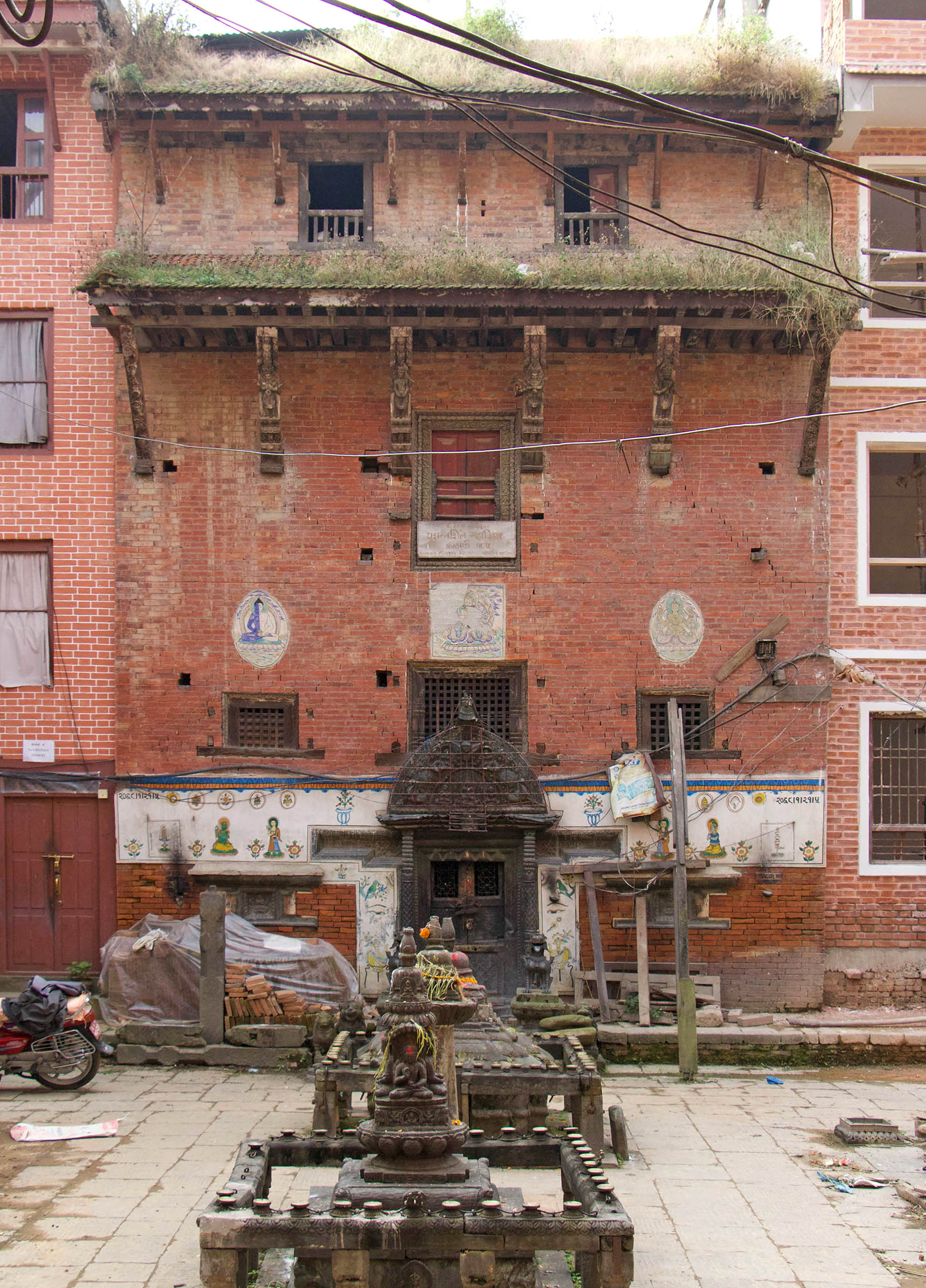Pasu Bāhāḥ, Bhaktapur
Curated by Ravi Shakya and Thomas Schrom

Pasu Bāhāḥ is the vernacular name of Paśupati Mahāvihāra which is the Sanskrit name. The bāhāḥ courtyard comprises of residential buildings as well as a main god house on the south and two shrine buildings (āgaṃchẽ) that house esoteric deities. The āgaṃchẽ on the west collapsed in the 2015 earthquakes and is currently (2023) under reconstruction.
The four-story god house faces north and features a gilt caitya finial. The principal deity (kvāḥpāḥdyaḥ), a stone statue of Maitreya, resides in the sanctum on the ground floor. The entrance is surmounted by a metal tympanum (toraṇa) with Akṣobhya in its center.
Small murals above the first floor's three latticed windows (tikijhyāḥ) represent Nāmasaṅgīti, Samantabhadra and Prajñāpāramitā. Paintings of Rāma and Rāvaṇa worshipping the Buddha flank the main entrance. These paintings are regularly renewed, most recently in 2012 CE.
When Śākyas from Kvāḥ Bāhāḥ of Patan moved to Bhaktapur, they became members and today the saṃgha consists of both Śākyas and Vajrācāryas. There is a provision of electing ten elders (daśapāramitā āḥju) from the Vajrācārya clan. The senior member acts as the spiritual preceptor (casalāḥju) and is required to move into the Dīpaṅkara Vihāra at Āḥjudyaḥ Bāhāḥ (BKT0210) and worship Dīpaṅkara Buddha for the rest of his life.
The earliest record relating to Pasu Bāhāḥ is a loan-deed (tamasuka) issued during the reign of King Jayadharmma Malla in 1407 CE. It refers to a person named Vajrācārya Abhaya of Śrī Bhuvanadharmma Saṃskārita Śrī Paśupati Mahāvihāra. Another early reference to the bāhāḥ is found in a colophon of a manuscript of the Pañcarakṣā which was copied in 1535 CE for Śākyabhikṣu Jitadeva, his wife Kīrtilakṣmī and his two sons of Paśupati Mahāvihāra. In an invitation to a Samyak feast in 1574 CE, Pasu Bāhāḥ is referred to as Bhuvanākaradharma Saṃskārita Paśupati Vihāra. In 1613 CE, Hākudeva, Jivarāja, Mahāpāla, and others offered a toraṇa to the deity of the Pasu Bāhā’s āgaṃ. The stone pillar with a caitya on top was installed in 1901 CE and the Dharmadhātujinālaya Caitya was built by a certain Pūrṇacandra Vajrācārya in 1902 CE with money he made from trade in Tibet.
For more information about Pasu Bāhāḥ, please visit DANAM.
